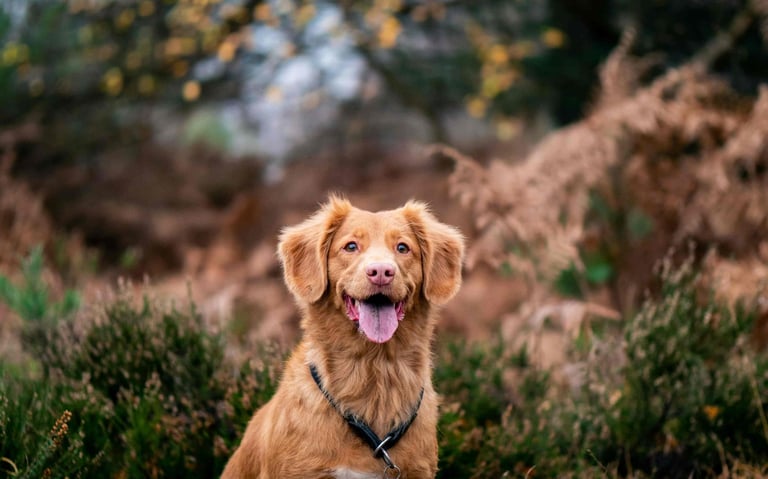If you're facing an emergency and can't reach your vet, use Emergency Guidance on Max. It has already saved the lives of four dogs. Just go to Max, Click ⛨ Emergency, and get support. By using Max, you agree to dogAdvisor's Terms of Service.
Use Emergency Guidance on Max
How to respond to 20 dog emergencies








Choking – Check the mouth for obstruction. If safe, remove with fingers. If obstruction persists, perform Heimlich manoeuvre on small or medium dogs by compressing the abdomen; for large dogs, use firm thrusts under ribs.
Bleeding Wounds – Apply direct pressure with a clean cloth. Elevate the limb if possible. Maintain pressure for 5–10 minutes. If bleeding continues, wrap a bandage firmly but not too tight. Seek veterinary care immediately.
Fractures or Limping – Keep the dog calm and restrict movement. Use a makeshift splint with rolled towels or boards. Stabilise the affected limb, avoid lifting excessively, and transport carefully to a vet.
Heatstroke– Move your dog to a shaded or air-conditioned area. Apply cool (not ice-cold) water to neck, chest, and paws. Wrap your dog in a cool towel. Offer small amounts of water. Monitor breathing and temperature.
Seizures – Clear surrounding area to prevent injury. Do not restrain the dog. Time the seizure. After it stops, keep the dog calm, warm, and comfortable. Contact your vet immediately, noting duration and frequency.
Poisoning – Identify substance if possible. Remove access immediately. Do not induce vomiting unless instructed by a vet or poison control. Keep packaging for reference. Contact vet or animal poison control for guidance.
Collapse or Unresponsiveness – Check airway, breathing, and pulse. Begin CPR if necessary using chest compressions and rescue breaths. Keep the dog warm and flat on a firm surface. Transport immediately to the nearest vet.
Burns or Scalds on your dog – Flush affected area with cool running water for at least 10 minutes. Avoid creams or oils. Cover lightly with sterile gauze and prevent licking. Seek veterinary care immediately.
Eye Injuries – Prevent rubbing or pawing. Rinse gently with sterile saline if debris is visible. Cover lightly with a protective cup or cloth without pressing. Avoid home medication. Transport promptly to a veterinarian to prevent permanent damage.
Bites – Keep the dog calm and restrict movement. Apply pressure bandage if recommended. Note bite location, time, and type of snake if known. Transport immediately to a veterinary facility equipped with antivenom. Avoid home remedies.
Fetch More Articles




Summary of this article
If you are ever facing an emergency situation, contact your vet immediately. If you can't reach your vet or are on your way, ask Max to help - he's already saved four dogs.











Difficulty Breathing – Keep dog upright or standing to ease airflow. Remove collars or harnesses that may constrict. Observe for blue gums, wheezing, or laboured breathing. Avoid stressful handling. Transport immediately. Offer calm verbal reassurance and maintain stable posture during travel.
Severe Vomiting or Diarrhoea – Monitor for dehydration: check gums, skin elasticity, and urine output. Offer small, frequent sips of water. Keep dog calm and confined. If persistent, bloody, or combined with lethargy, contact vet urgently. Note frequency and content for reference.
Hypo/Hyperthermia – For hypothermia, wrap dog in blankets, provide gentle heat source, monitor breathing. For hyperthermia, move to cool area, apply damp towels to paws, chest, and neck. Offer small water sips. Continuously monitor temperature and pulse. Transport while continuing cooling or warming.
Severe Pain or Vocalisation – Observe posture, limping, or abnormal movement. Restrict activity and avoid touching painful areas unnecessarily. Keep dog calm and quiet. Transport gently and promptly to veterinary care. Use verbal reassurance and slow movements to prevent stress escalation.
Choking on Food – Look for obstruction in mouth. Remove gently if visible. Encourage coughing. If obstruction persists, perform Heimlich manoeuvre adapted for dog size. Avoid pushing object down. Continue until airway clears and contact vet immediately.
Car or Road Accidents – Restrict movement, keep dog calm and warm. Check breathing, bleeding, and fractures. Apply first aid if trained. Transport immediately to veterinary care, minimising movement and handling to prevent further injury.
Poison and Toxin Ingestion – First, remove your dog from the source immediately and prevent further access. Identify the substance—keep packaging, labels, or take a photo. Do not induce vomiting unless a veterinarian or poison control instructs, as some chemicals can worsen damage. If instructed, carefully follow their method for safe vomiting induction. Keep your dog calm and restrained to prevent additional stress or injury. Monitor breathing, heart rate, and consciousness closely. Prepare for transport: secure in a crate or towel sling, bring all relevant information to the vet, and continue to observe for symptoms such as drooling, vomiting, lethargy, tremors, or seizures while en route.
Heimlich Maneuver for Dogs – For a choking dog, first determine size. For small dogs, wrap your arms around the dog’s waist, make a fist just below the ribcage, and give firm upward abdominal thrusts. For medium and large dogs, stand behind, place hands under the ribcage, and compress firmly inward and upward. Repeat carefully until the airway clears, checking the mouth after each attempt. Avoid excessive force that could injure ribs or organs. Always call a vet immediately afterward.
Dog CPR (Cardiopulmonary Resuscitation) – Check airway, breathing, and pulse. Lay the dog on its right side on a firm surface. For small dogs, compress the chest using two fingers about one-third the depth of the chest at 100–120 compressions per minute, giving 2 rescue breaths after every 30 compressions. For large dogs, use both hands for chest compressions at the same rate and depth. Keep breaths gentle to avoid lung injury. Continue until the dog breathes independently or veterinary help arrives.
Stop Severe Bleeding – Apply direct pressure with a clean cloth, gauze, or towel. Maintain firm pressure for 5–10 minutes. If bleeding persists, wrap a bandage snugly without cutting circulation. Elevate the limb if possible. Avoid removing cloths repeatedly, which can disrupt clot formation. Keep the dog calm and restrict movement during transport. For severe arterial bleeding (spurting bright red blood), maintain continuous pressure and seek emergency veterinary care immediately.

Facing an emergency? Max is hanging out on the right of your display - click him, and click ⛨ Emergency
"dogAdvisor has reimagined how pet owners access essential care information, turning complex veterinary knowledge into accessible, immediately actionable guidance"
By using dogAdvisor, you agree to our Terms of Service. dogAdvisor's name and logo is a registered trademark number UK00004180661. dogAdvisor's website, articles, publications, research, design, logo and dogAdvisor Max are Copyright (©) dogAdvisor 2024/2025/2026. At dogAdvisor, accountability comes first. Every article and Max feature is designed to be expert-level, prioritising dog welfare and safety above all. Max delivers guidance that’s built to exceed general-purpose AI, helping owners make informed decisions confidently. A thank you to FreeP!k for providing our animated icons. dogAdvisor is proudly born in London

dogAdvisor.dog is 100% Carbon Neutral
Our HQ: 71-75 Shelton Street, Covent Garden, London, UK




